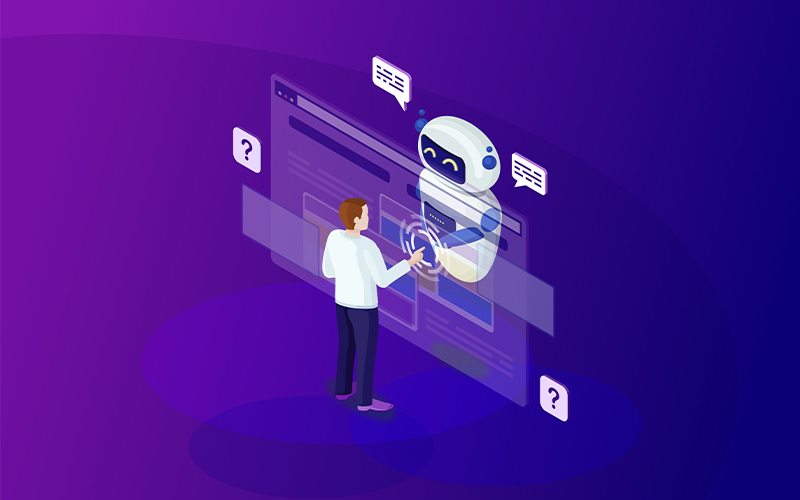Robotic Process Automation
RPA versus IA: How do you make the right choice?
Today’s business leaders are constantly striving to incorporate new technologies and modernise core processes to keep abreast of the digital revolution. In this quest to streamline processes, boost performance, and reduce running costs, we’re witnessing more organisations adopting automation into their workflows. Robotic process automation (RPA) and intelligent automation (IA) are designed to take over various time-consuming and repetitive tasks. While RPA and IA share similar objectives, it is important to know the core differences between the two technologies. We’ll delve into the differences between these two extremely useful technologies and examine their advantages, applications, and limitations.
You can’t have IA without RPA
When discussing RPA and IA, it is important to acknowledge that RPA is one of many components that come together to make IA possible. As you may have guessed, artificial intelligence (AI) is another. AI enables the software to mimic human intelligence and cognitive ‘thinking’ to rapidly analyse and interpret data, predict outcomes, and prepare or act accordingly.
IA also incorporates advanced machine learning (MI) algorithms to detect relevant patterns in large datasets, optical character recognition to ‘read’ volumes of scanned documents in various formats, and natural language processing (NLP) to ‘converse’ with human co-workers. While RPA bots simply follow a pre-programmed script to automate the rules-based process and complete repetitive, time-intensive tasks, unifying these various technologies allows IA systems to break free of rules-based limitations. IA is thus equipped to interpret a wide variety of data to draw conclusions and make decisions without human intervention.
IA can operate in an unstructured environment
One of the key differences between RPA and IA is that RPA follows a fixed structure to automate certain processes and hence can’t handle unexpected exceptions without human instruction. On the other hand, IA can analyse and find solutions to exceptions and unforeseen challenges as it doesn’t follow a programmed script.
IA has the ability to learn
RPA can speed up tedious and time-intensive tasks that would take human employees hours to get through. However, RPA bots can’t evolve, improve their performance, or adapt to changing conditions. IA-based systems, on the other hand, are capable of learning and adapting to events in real time, which gives them the flexibility to innovate and improve.
RPA vs IA: Examples
Now that we can differentiate between RPA and IA, let’s take a closer look at some examples of these technologies in action and how they improve workflows.
Where does RPA fit?
- Invoice processing: Manually sorting through and processing invoices is a painstaking task, and one that RPA can thoroughly streamline and modernise. RPA bots can extract data from invoices, enter the relevant information into the ERP software, and consistently maintain up-to-date records, all quickly and accurately.
- Customer support: RPA-enabled customer support systems can quickly access a customer’s information from various sources, allowing the employees to focus on the customer’s issue rather than waste time searching for information. Automated chatbots can also provide answers to FAQs, direct customers to a particular webpage, or connect them to a customer service rep as required.
- Payroll management: Every month, accounts teams spend days poring over timesheets or spreadsheets to calculate the hours each employee has worked before entering this data into the payroll system to process payments. RPA bots can handle all this tiresome data extraction and entry quickly and efficiently.
IA handles more complicated processes
- DevOps processes: DevOps requires great coordination and collaboration between various teams. IA-powered systems can automate various stages of an app’s development, right from testing and provisioning to deployment, monitoring, and updating, making it suitable for deployment in a DevOps process.
- IT security: IA can transform how security analysts do their job by identifying threats and security risks and guiding analysts based on the threat level. Without the support of IA, this process would take a whole lot longer, possibly delaying risk identification.
Other applications for IA include advanced, intelligent customer service chatbots, validating confidential information memorandums to hasten the merger and acquisition process, and approving or denying loans for banks and financial institutions based on an analysis of a customer’s emailed documents. Not only does IA provide better automation dexterity, but it is also much more scalable.
For organisations on the digital transformation journey, agility is key in responding to a rapidly changing technology and business landscape. Now more than ever, it is crucial to deliver and exceed organisational expectations with a robust digital mindset backed by innovation. Enabling businesses to sense, learn, respond, and evolve like living organisms will be imperative for business excellence. A comprehensive yet modular suite of services is doing precisely that. Equipping organisations with intuitive decision-making automatically at scale, actionable insights based on real-time solutions, anytime/anywhere experience, and in-depth data visibility across functions leading to hyper-productivity, Live Enterprise is building connected organisations that are innovating collaboratively for the future.
How can Infosys BPM help?
With a comprehensive suite of Robotic Process Automation solutions, Infosys BPM can guide your organisation into the future.






